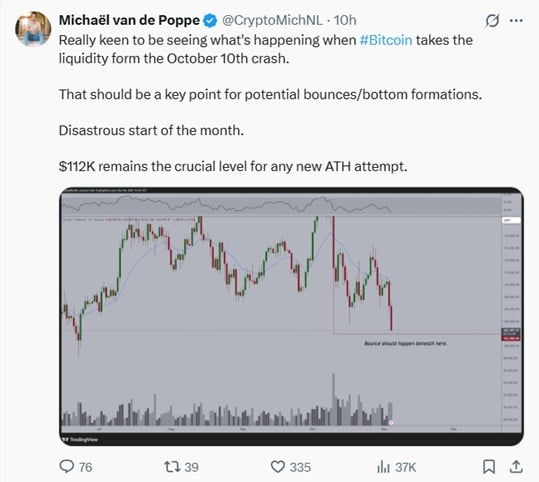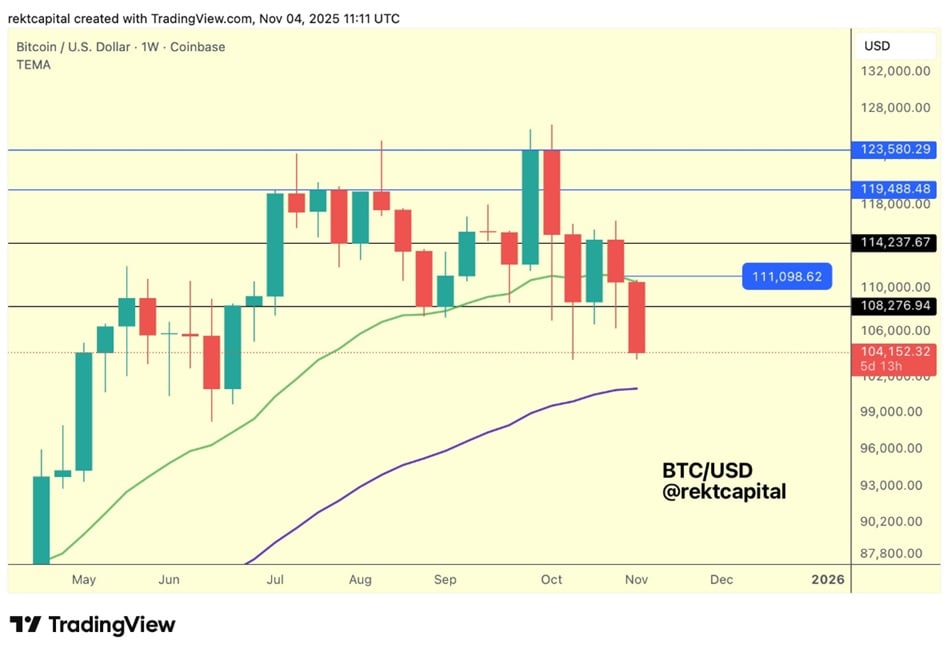CaaS: The "SaaS Moment" for Blockchain
Source: VeradiVerdict Compiled by: Zhou, ChainCatcher Summary Crypto as a Service (CaaS) is the "Software as a Service (SaaS) era" in the blockchain space. Banks and fintech companies no longer need to build crypto infrastructure from scratch. They can simply connect to APIs and white-label platforms to launch digital asset functionality within days or weeks, instead of the years that used to take. ( Note: White-labeling essentially involves one party providing a product or technology, while another party brands it for sale or operation. In the finance/crypto field, this refers to banks or exchanges using third-party trading systems, wallets, or payment gateways and then rebranding them.) Mainstream markets are accelerating adoption through three channels. Banks are partnering with custodians like Coinbase, Anchorage, and BitGo while actively exploring tokenized assets; fintech companies are issuing their own stablecoins using platforms like M^0; and payment processors such as Western Union (with $300 billion in annual transactions) and Zelle (with over $1 trillion in annual transactions) are now integrating stablecoins to enable instant, low-cost cross-border settlements. Crypto as a Service (CaaS) isn't actually that complicated. Essentially, it's Software as a Service (SaaS) based on cryptocurrency, making it a hundred times easier for institutions and businesses to integrate into the cryptocurrency space. Banks, fintech companies, and enterprises no longer need to painstakingly build internal cryptocurrency functionality. Instead, they can simply plug and play, deploying within days using proven APIs and white-label platforms. Businesses can focus on their customers without worrying about the complexities of blockchain. They can leverage existing infrastructure to participate in cryptocurrency transactions more efficiently and cost-effectively. In other words, they can easily and seamlessly integrate into the digital asset ecosystem. CaaS is poised for exponential growth. CaaS is a cloud-based business model and infrastructure solution that enables businesses, fintech companies, and developers to integrate cryptocurrency and blockchain functionality into their operations without having to build or maintain the underlying technology from scratch. CaaS provides ready-to-use, scalable services, typically delivered via APIs or white-label platforms, such as crypto wallets, trading engines, payment gateways, asset storage, custody, and compliance tools. This allows businesses to quickly offer digital asset functionality under their own brand, reducing development costs, time, and required technical expertise. Like other "as-a-service" offerings, this model allows businesses of all sizes, from startups to established companies, to participate in a cost-effective manner. In September 2025, Coinbase Institutional listed CaaS as one of its biggest growth areas. Since 2013, Pantera Capital has been committed to driving the development of CaaS through investment. We strategically invest in infrastructure, tools, and technology to ensure that CaaS can operate at scale. By accelerating the development of backend fund management, custody, and wallets, we have significantly enhanced the service tier of CaaS. Advantages of CaaS By using CaaS to transparently integrate encryption capabilities into their systems, enterprises can achieve numerous strategic and operational advantages more quickly and cost-effectively. These advantages include: One-stop integration and seamless embedding : The CaaS platform eliminates the need for custom development cycles, enabling teams to activate features in days rather than months. Flexible profit models : Businesses can choose a subscription-based fixed-price model for predictable costs, or a pay-as-you-go billing model to keep expenses in line with revenue. Either approach avoids large upfront capital investments. Outsourcing blockchain complexity : Enterprises can offload technical management while benefiting from a powerful enterprise-grade backend, ensuring near-perfect uptime, real-time monitoring, and automatic failover. Developer-friendly APIs and SDKs : Developers can embed wallet creation and key management functions, smoothly handle on-chain settlements, trigger smart contract interactions, and create a comprehensive sandbox environment. White-label branding and an intuitive interface : The CaaS solution is easy to customize, enabling non-technical teams to configure free infrastructure, supported assets, and user onboarding processes. Other value-added features : Leading providers bundle ancillary services together, such as fraud detection based on on-chain analytics; automated tax filing; multi-signature fund management; and cross-chain bridging for asset interoperability. These characteristics transform cryptocurrency from a technological novelty into a revenue-generating product line while maintaining a focus on core business capabilities. Three core use cases We believe the world is rapidly evolving towards a cryptocurrency-native environment, with individuals and businesses interacting more frequently with digital assets. This shift is driven by increasing user acceptance of blockchain wallets, decentralized applications, and on-chain transactions, which in turn benefits from continuously improving user interfaces, abundant educational resources, and practical application value. However, for cryptocurrencies to truly integrate into the mainstream and achieve widespread adoption, a strong and seamless bridge must be built to bridge the gap between traditional finance (TradFi) and decentralized finance (DeFi). Institutions seek the advantages of cryptocurrencies (speed, programmability, and global accessibility) while relying on trustworthy intermediaries to manage their underlying complexities: tools, security, technology stack, and liquidity provision. Ultimately, this ecosystem integration could gradually bring billions of users onto the blockchain. Use Case 1: Bank Banks are increasingly partnering with regulated cryptocurrency custodians such as Coinbase Custody, Anchorage Digital, and BitGo to provide institutional-grade custody, insured storage, and seamless spot trading services for digital assets like Bitcoin and Ethereum. These foundational services—custody, execution, and basic lending—represent the most readily achievable aspects of cryptocurrency integration, enabling banks to easily embrace customers without forcing them out of the traditional banking system. Beyond these fundamental elements, banks can leverage decentralized finance (DeFi) protocols to generate competitive returns from idle treasury assets or customer deposits. For example, they can deploy stablecoins into permissionless lending markets (such as Morpho, Aave, or Compound) or liquidity pools of automated market makers (AMMs) like Uniswap to obtain real-time, transparent returns that typically outperform traditional fixed-income products. The tokenization of Real-World Assets (RWAs) presents transformative opportunities. Banks can initiate and distribute on-chain versions of traditional securities (e.g., tokenized U.S. Treasury bonds, corporate bonds, private credit, or even real estate funds issued through BlackRock's BUIDL fund), bringing off-chain value to public blockchains like Ethereum, Polygon, or Base. These RWAs can then be traded peer-to-peer through DeFi protocols such as Morpho (for optimizing lending), Pendle (for yield sharing), or Centrifuge (for private credit pools), while ensuring KYC/AML compliance through whitelisted wallets or institutional vaults. RWAs can also serve as high-quality collateral in the DeFi lending market. Crucially, banks can offer seamless stablecoin access without losing customers. Through embedded wallets or custodial sub-accounts, customers can hold USDC, USDT, or FDIC-insured digital dollars directly within the bank's app (for payments, remittances, or yield-generating investments) without leaving the bank's ecosystem. This "walled garden" model resembles a new bank but with regulated trust. Looking ahead, major banks may form alliances to issue branded stablecoins backed 1:1 by centralized reserves. These stablecoins could be settled instantly on public blockchains while complying with regulatory requirements, thus connecting traditional finance with programmable money. If a bank views blockchain as infrastructure, rather than an accessory tool, it is likely to capture the next trillion dollars in value. Use Case 2: Fintech Companies and New Types of Banks Fintech companies and new-age banks are rapidly integrating cryptocurrencies into their core offerings through strategic partnerships with established platforms such as Robinhood, Revolut, and Webull. These collaborations enable seamless use and secure custody of digital assets, while providing instant trading of tokenized versions of traditional stocks, effectively bridging the gap between traditional finance and blockchain-based markets. Beyond partnerships, fintech companies can leverage professional service providers like Alchemy to build and launch their own blockchain infrastructure. Alchemy, a leader in blockchain development platforms, offers scalable node infrastructure, enhanced APIs, and developer tools that simplify the creation of custom Layer-1 or Layer-2 networks. This allows fintech companies to tailor blockchains for specific use cases, such as high-throughput payments, decentralized authentication, or RWA (Risk Weighted Authorization), while ensuring compliance with evolving regulatory requirements and optimizing for low latency and cost-effectiveness. Fintech companies can further deepen their involvement in the cryptocurrency space by issuing their own stablecoins and leveraging decentralized protocols on platforms like M^0 to mint yielding, fungible stablecoins backed by high-quality collateral such as US Treasury bonds. By adopting this model, fintech companies can mint their own tokens on demand, maintain full control over the underlying economic mechanisms (including interest accumulation and redemption mechanisms), ensure regulatory compliance through transparent on-chain reserves, and participate in co-governance through decentralized autonomous organizations (DAOs). Furthermore, they can benefit from enhanced liquidity pools on major exchanges and DeFi protocols, reducing fragmentation and increasing user adoption. This approach not only creates new revenue streams but also positions fintech companies as innovators in the field of programmable money and fosters customer loyalty in the competitive digital economy. Use Case 3: Payment Processor Payment companies are building stablecoin "sandwiches": a multi-tiered cross-border settlement system that receives fiat currency at one end and exports instant, low-cost liquidity in another jurisdiction, while minimizing foreign exchange spreads, intermediary fees, and settlement delays. The components of the "sandwich" include: Top Slice (Entry Point) : US customers send US dollars to payment providers such as Stripe, Circle, Ripple, or newer banks like Mercury. Filling (minting) : US dollars are immediately exchanged at a 1:1 ratio for regulated stablecoins—usually USDC (Circle), USDP (Paxos), or bank-issued digital dollars. Bottom Slice (Export) : Stablecoins are bridged or exchanged for local currency stablecoins—for example, aARS (pegged to the Argentine peso), BRLA (Brazil), or MXNA (Mexico)—or become central bank digital currency pilot projects directly (for example, Drex in Brazil). Settlement : Funds arrive in local bank accounts, mobile wallets or merchant payments on a T+0 (instant) basis, with total costs typically below 0.1%, compared to 3-7% through SWIFT + agent banks. Western Union, a 175-year-old remittance giant that processes over $300 billion in remittances annually, recently announced the integration of stablecoins into its ecosystem. Pantera Capital CEO Devin McGranahan stated in July 2025 that the company had historically been "cautious" about cryptocurrencies, concerned about their volatility and regulatory issues. However, the enactment of the Genius Act has changed this. “As the rules become clearer, we see a real opportunity to integrate digital assets into our business,” McGranahan said on the Q3 2025 earnings call. The result: Western Union is currently actively testing stablecoin solutions for Treasury settlements and customer payments, leveraging blockchain technology to eliminate the cumbersome processes of correspondent banking. Zelle, a bank-backed peer-to-peer payment giant (part of Early Warning Services, a consortium of JPMorgan Chase, Bank of America, Wells Fargo, and others), facilitates over $1 trillion in fee-free transfers annually within the United States via simple phone numbers or email addresses, currently boasting over 2,300 partner institutions and 150 million users. However, cross-border payments have been a previous challenge. On October 24, 2025, Early Warning announced a stablecoin plan aimed at bringing Zelle to the international market, offering "the same speed and reliability" overseas. As banks, fintech/new banks, and payment processors integrate cryptocurrencies in an intuitive, plug-and-play, and compliant manner (with as few regulators as possible), they can continue to expand their global reach and strengthen relationships. in conclusion CaaS is not hype—it represents a revolution in infrastructure that makes cryptocurrencies invisible to end users. Just as people don't think of AWS when watching Netflix or Salesforce when checking a CRM, consumers and businesses won't think of blockchain when making instant cross-border payments or accessing tokenized assets. The winners of this revolution are not companies that add cryptocurrencies as an afterthought to traditional systems, but rather institutions and enterprises that see blockchain as infrastructure, and the investors who support the underlying technology that underpins it all.








